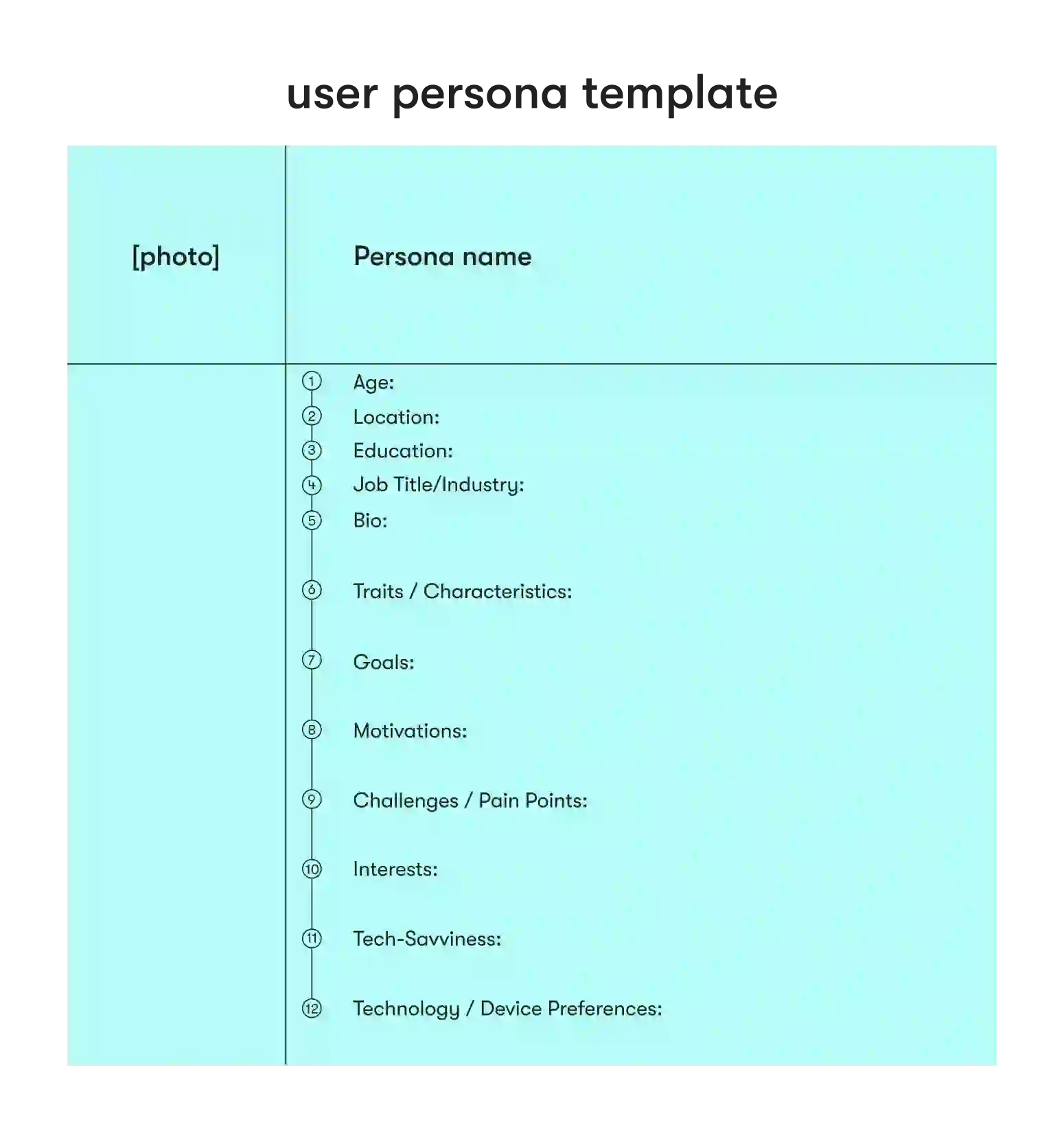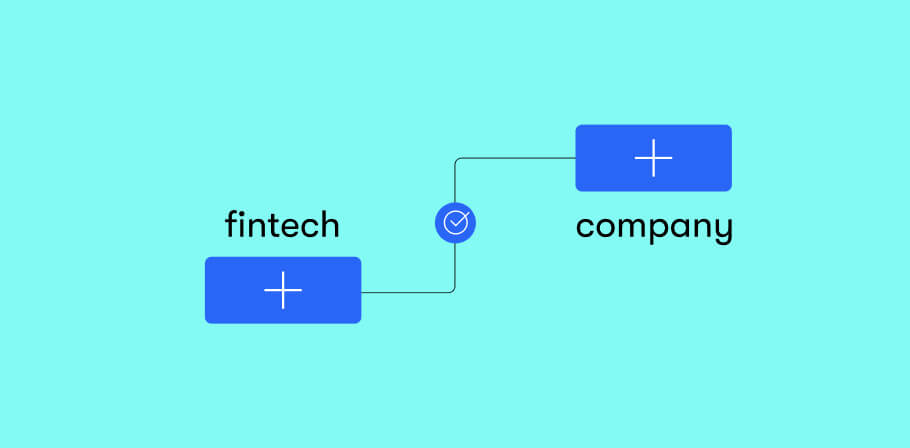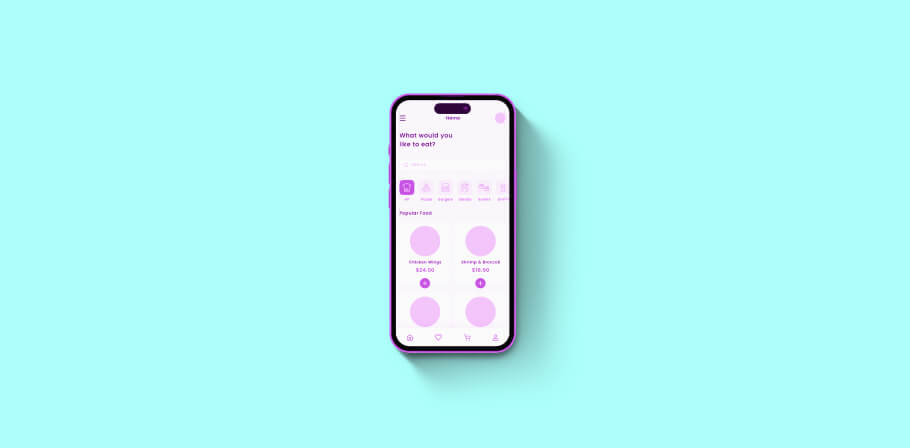When you’re developing new software applications, mobile apps, or websites, ensuring your target user connects to the design you invest into, is essential. Persona mapping simplifies that process, allowing you to determine who your target audience is and what they prefer. Then, it’s possible to align your design with the various archetypes you identify, leading to an improved customer experience.
Here’s an in-depth look at what a persona map is, why you need one to create better products that entice your customer base, and some helpful examples and templates.
What is persona mapping?
Persona mapping is a marketing strategy that leads to an improved user experience (UX) for your ideal customer. The process involves creating fictional customer personas based on demographic information, personality traits, pain points, and other details about your target customers.
While persona mapping is a significant part of marketing processes, it also assists with planning deadlines for the development project. The strategy allows a product team or UX designer to account for the personal attributes and preferences of real people, ensuring user needs are factored into the equation.
What is persona mapping in design thinking?
In the design thinking process, persona maps allow team members to embrace user-centered design principles when creating solutions. The goal is to create fictional user or buyer personas based on potential customers and their needs and preferences.
Essentially, current or target customers are defined by key characteristics they share, leading to a central user persona that serves as a guiding light for product design (and future marketing efforts). In some cases, several persona maps are created as a means of representing different segments of the user base within the target market, ensuring they’re all considered.
What are the benefits of persona mapping?
As mentioned above, persona mapping creates opportunities to ensure the UX — including the impact of user needs and preferences — is factored into the design process. Whether the team is simply working to brainstorm or whiteboard the basics of a new application or wants to incorporate UX best practices into their entire workflow, having a persona map reduces ambiguity about who the target audience is and what they want.
Persona mapping is often an underlying force during prototype testing and when it comes to advancing users through the customer journey map to secure conversions. Along with ensuring any developed prototypes are appropriately focused on the target user, prototyping creates opportunities to solicit additional feedback from potential customers. In turn, further improvements are possible, leading to more user-friendly designs.
With persona mapping, it’s also easier to offer personalized experiences. By doing so, it’s possible to reduce customer churn, increase referrals, and establish a company’s brand as a leader within the space for various market segments.
YOU’VE JUST FOUND A TEAM TO BUILD AND TEST YOUR PROTOTYPE
Get EPAM Startups & SMBs on board to take your product to market. Expert consulting and software engineering for startups under one roof.
User persona definition and use cases
In the simplest sense, a user persona is a fictional representation of a software solution, mobile application, or website’s target user. The main use cases for creating user personas is to ensure that design teams align their decisions and actions with the needs of potential users. Essentially, user personas are a simplified way to summarize research into user needs and preferences, making that information accessible to all who are creating the product or service in question.
User personas are also valuable in other situations. They can assist marketing departments with planning, ensuring any social media or online advertising targets the correct market segment. Additionally, it can help various stakeholders and leaders align the upcoming product with a brand voice, leading to further cohesion.
What is the difference between a persona and a user profile?
While many people use the terms “persona” and “user profile” interchangeably, the concepts are actually quite different. A user persona is a detailed outline of a fictional representation of the target user that’s based on real data, observation, and research. It goes far beyond demographics, looking to understand a user’s preferences, needs, characteristics, pain points, goals, position, and more. A user profile is often far more high-level, so it doesn’t include the same level of detail as you find in a persona map.
3 types of user personas
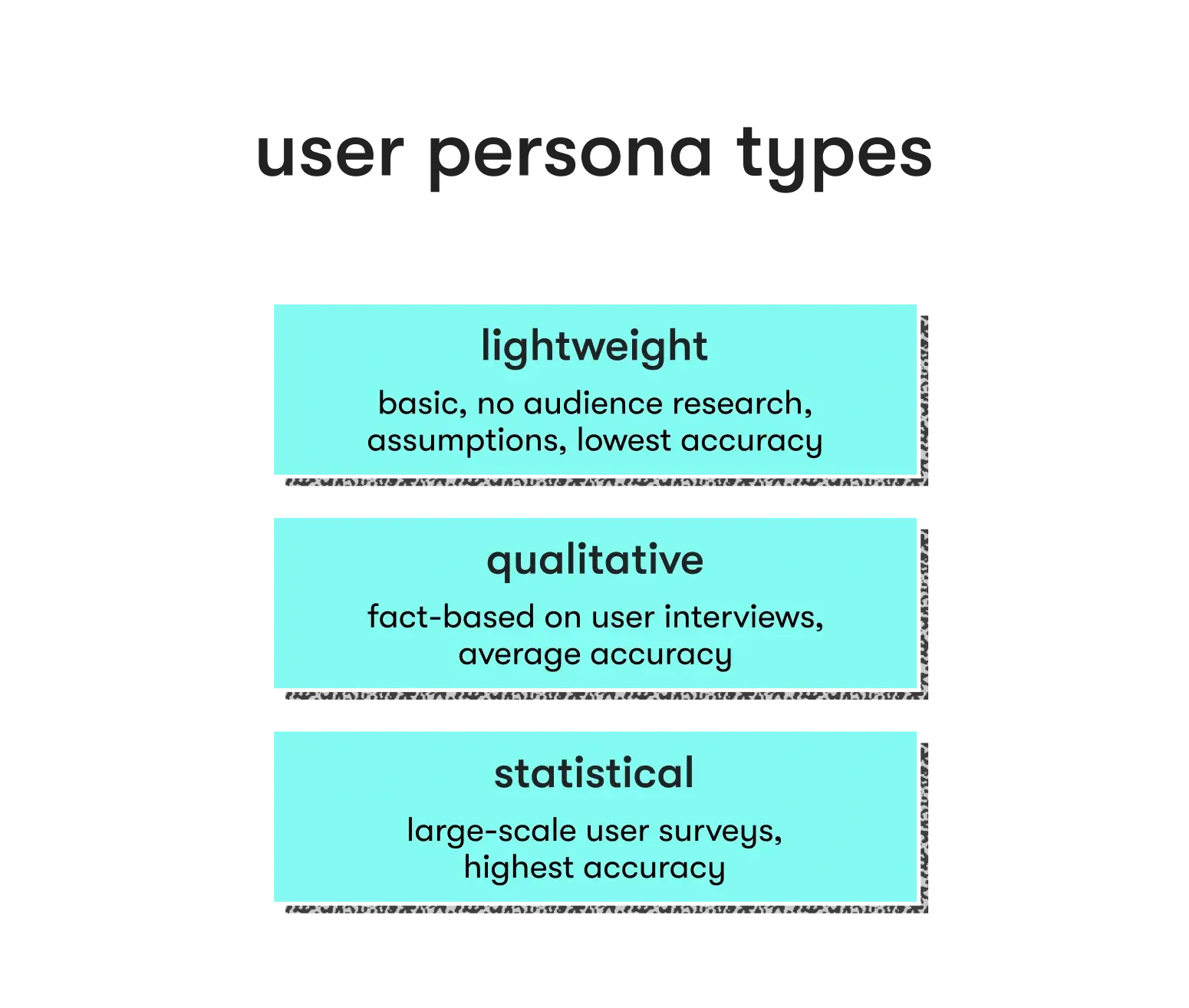
Generally, companies can use three strategies to create user personas. Which approach is best varies depending on several factors, including available time, available resources, amount of existing data, and more.
Here is an overview of the three types of user personas.
Lightweight
A lightweight user persona is created without additional audience segment research. Existing knowledge or logical assumptions are used to define the users, including their needs and preferences. Usually, lightweight user personas are designed by committee, allowing design team members and stakeholders to work together to create, combine, and edit various personas until there’s a finalized set.
Lightweight personas are beneficial in situations where there’s limited time for additional research, but there’s still a need for a cohesive vision. Overall, the most significant drawback is the lack of further research, which could lead to inaccurate user personas.
Qualitative
Qualitative user persona mapping consists of conducting research to explore the qualities of potential users. In most cases, this involves gathering data by interviewing prospective end users. Then, various participants are segmented based on shared traits, allowing for the creation of corresponding user personas.
The benefit is that the resulting user personas are more likely to align with real-world customers, as there’s a reduced need to operate based on assumptions. When it comes to drawbacks, this process is potentially a bit time-consuming, and sample sizes may be small, which could lead to overlooked characteristics.
Statistical
Overall, statistical user personas are the most involved, as they require collecting a large quantity of data from a substantially sized user base. In most cases, surveying users is the preferred approach, though selective interviewing may also be a part of the equation. Responses are combined with other data — such as demographics — to shape user personas.
The larger sample sizes typically ensure that outliers are represented in the data, leading to higher accuracy. However, this strategy requires a significant time investment and expertise in statistical analysis, so it’s far more cumbersome compared to the alternatives.
How to create a user persona in 5 steps
1. Gather basic demographics
Usually, the first step in creating a user persona is research. You want to identify the age, gender, job title, location, and similar details about your target user. Essentially, that provides a necessary foundation that’s then shaped during the remaining steps.
2. Ask smart questions
Once you have basic demographics, it’s time to ask the right questions. Generally, this is handled one or two ways. First, product team members can consider the answers themselves, essentially making assumptions based on what they believe they know about the segment. Second, you can ask potential users directly.
The goal is to determine how the user defined in the persona will use the solution. Additionally, it’s an opportunity to outline needs, preferences, challenges, pain points, and potential barriers to buy-in.
3. Do a competitor analysis
Competitor analysis allows companies to identify what others operating within their space are doing to connect with their audience. Along with making it easier to determine what market segments competitors are trying to reach, it can shine a light on opportunities based on groups they aren’t currently targeting that are within your ideal audience. Plus, it’s a chance to review feedback provided by a competitor’s customers, allowing you to see what is and isn’t working for them.
4. Dig into traits
After gathering the information above, it’s time to take a deeper dive into a user persona’s characteristics. Generally, this means identifying lifestyle traits, shared interests, and similar features that make the target user audience cohesive based on the group it represents and unique in regard to other developed personas.
5. Validate the persona
Once you have the information collected and developed an initial persona, it’s generally wise to validate it. The goal here is to ensure comprehensiveness and a reasonable degree of accuracy. Typically, a combination of research and usability testing — including prototyping and soliciting feedback — is critical for validation. Often, it’s an ongoing process, creating opportunities to refine a persona map over time to ensure it’s appropriately targeted.
How to make a persona map
Generally, persona maps are comprised of specific sections, the nature of which may vary slightly depending on the product you’re developing.
One universal component is the basic overview, which includes details like gender, age, job title, location, and specific other demographic information if needed. It may also include a synopsis of the persona’s fictional but representative background, as that can bring clarity to the basic overview details.
Next, there’s a section dedicated to goals, which outlines some of the persona’s priorities and what they aim to accomplish. These can include objectives relating to what they’d want to achieve with the software application, mobile app, or website, as well as general goals relating to how the persona would live their daily life.
The third section usually covers attitudes, traits, or other personality characteristics that are relevant to the product design. Including another section that addresses frustrations and pain points is ideal, as that ensures the design team is aware of what may drive that persona away if those issues are present. Similarly, having a section dedicated to motivations is also wise, as it further outlines why a persona may engage with the product.
Beyond that, you might include segments that outline the persona’s interests, tech skill level, technology or device preferences, and similar details. What’s added to the persona mainly depends on factors relating to the end product.
Additionally, some companies decide to add a stock photo that represents the audience outlined in the user persona. While this can help make the persona feel more real, it’s critical to ensure that the image doesn’t create inaccurate impressions or encourage assumptions.
TAKE YOUR PRODUCT FROM IDEA TO LAUNCH WITH EPAM STARTUPS & SMBS
User persona map examples and templates
Here are two example persona maps, one based on a business-to-consumer (B2C) and one based on a business-to-business (B2B) persona.
A B2C persona map example for a new social media app
Social Sasha Age: 25 Location: Seattle, WA Education: Bachelor’s Job Title / Industry: Entry-level in the fashion industry Bio: Sasha is an outgoing single woman with a new career in the fashion industry. She’s looking to boost her personal brand online and is open to new platforms where early adoption could work in her favor. Sasha has a keen design eye and is a digital native. Traits / Characteristics:
Goals:
Motivations:
Challenges / Pain Points:
Interests:
Tech-Savviness:
Technology / Device Preferences:
|
A B2B persona map example for an operations technology solution
C-Suite Charles Age: 55 Location: Los Angeles, CA Education: Master’s Degree Job Title / Industry: C-Suite at a large-sized company in the manufacturing industry Bio: Charles is an experienced C-suite professional that’s married with two teenage children. After earning his second Master’s degree, he reached the top level in his field, where he’s worked for the past fifteen years. Traits / Characteristics:
Goals:
Motivations:
Challenges / Pain Points:
Interests:
Tech-Savviness:
Technology / Device Preferences:
|
User persona template
Here is a corresponding user persona template to create your own personas:
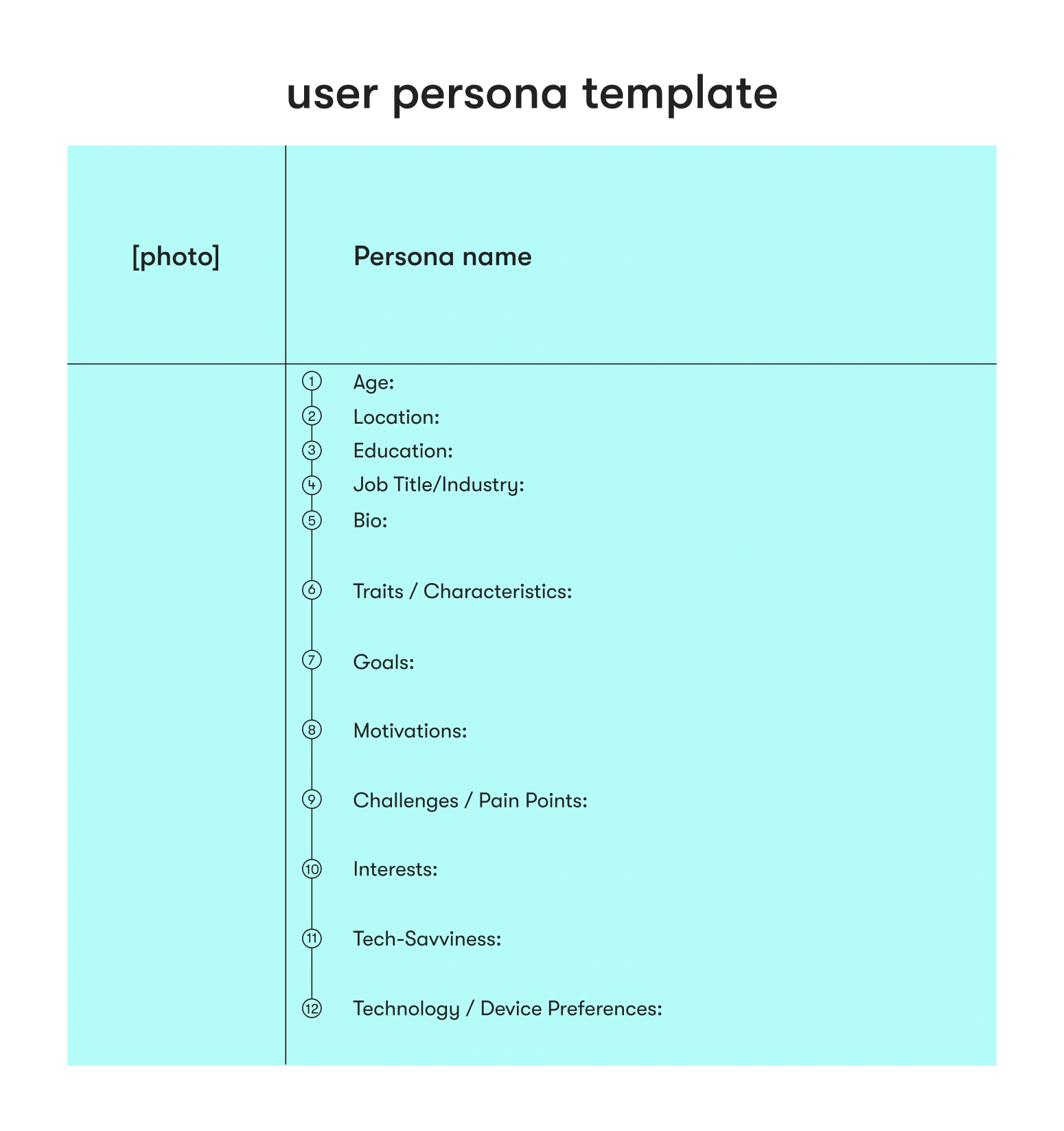

Anush has a history of planning and executing digital communications strategies with a focus on technology partnerships, tech buying advice for small companies, and remote team collaboration insights. At EPAM Startups & SMBs, Anush works closely with subject matter experts to share first-hand expertise on making software engineering collaboration a success for all parties involved.
Anush has a history of planning and executing digital communications strategies with a focus on technology partnerships, tech buying advice for small companies, and remote team collaboration insights. At EPAM Startups & SMBs, Anush works closely with subject matter experts to share first-hand expertise on making software engineering collaboration a success for all parties involved.
Explore our Editorial Policy to learn more about our standards for content creation.
read more


